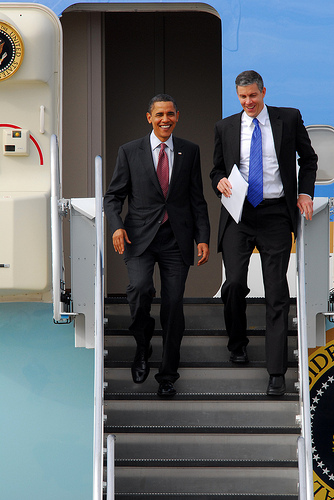
Flickr/<a href="http://www.flickr.com/photos/pirateheart/2416967979/">England</a> (<a href="http://www.creativecommons.org">Creative Commons</a>).
The National Education Association, the largest teachers’ union (actually, the largest union, period) in America, has long been closely tied to the Democratic Party. This election year is no different: this cycle, the union has spent some $40 million to elect (mostly) Dems around the country. (That’s up from 2006, but down from 2008, a presidential election year.)
About a third of that money—$17 million—was funneled toward independent expenditures to support three incumbent senators: Harry Reid (D-Nev.), Michael Bennet (D-Colo), and Patty Murray (D-Wash.), as well as Joe Sestak, the Dem candidate for Senate in Pennsylvania. The NEA is also targeting a number of House districts the Dems stand a very good chance of losing: AZ-05 (Harry Mitchell), CO-03 (John Salazar), FL-22 (Ron Klein), IL-17 (Phil Hare), NY-01 (Tim Bishop), NC-08 (Larry Kissell), OH-13 (Betty Sutton), PA-08 (Patrick Murray), VA-05 (Tom Perriello), and TX-23 (Ciro Rodriguez). In a real GOP wave, all of those targeted candidates could lose. But the union thinks it made its targeting choices wisely: “We’ve been very strategic about how we spend our resources,” Karen White, the NEA’s director of campaigns and elections, told me last week. “We targeted [these candidates] because they need a lot of help and they’re in marginal races. That’s where we have the greatest ability to make an impact.”
So what’s happened to the rest of the NEA’s investment? About a third of it was spent on ballot measure campaigns in Massachusetts and Washington, and another third went to member-to-member outreach and get-out-the-vote efforts. That last bit is what will really have an effect today.









